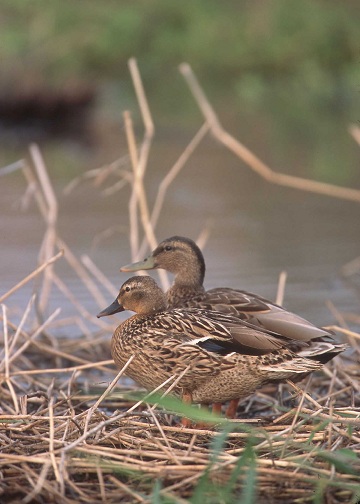Published in the Ocean Watch column, Honolulu Star-Advertiser © Susan Scott
August 10, 2007
WHILE crossing the bridge over Kaelepulu Stream (the one that runs through Kailua Beach Park), I stopped to watch two pairs of ducks swimming there.
The water was so clear in this much-maligned stream, I could see the ducks’ orange feet fan and fold as they paddled toward thousands of finger-size tilapia.
The fish recognized the waterfowl as nonthreats and, like a team of escorts, formed a ring of space around each duck as they all moved silently through the water. Seeing this interspecies ballet over the white, algae-pocked sand was one of those fine moments in life. I inhaled the summer morning air. A good day just got better.
I followed the animals across the bridge. Two men stood near the end, also watching the fish-and-duck procession. I nodded to the men with a smile, and one said to me, “I love watching one animal eat another.”
This statement surprised me so much I couldn’t think of anything to say. “You know,” he explained, “species eating other species?”
If that’s what this guy wants to see, I thought, he’s going to be standing on this bridge for a really long time. Tilapia are algae eaters, and although ducks eat snails, worms and insects when available, they mostly graze on plants.
The ducks in the stream looked like our native ducks, Koloa, but that was unlikely. Oahu, Hawaii and Maui lost nearly all their native ducks in the past from hunting, habitat destruction and introduced predators.
To re-establish these populations, captive-reared koloa have been released intermittently since 1979 on all three islands. Today, however, the descendants of most, if not all, of those released ducks are koloa-mallard mixes.
This isn’t surprising. Mallards are the Don Juans of ducks. Wild mallards are the ancestors of white domestic ducks and readily interbreed with most domestic stocks. Mallards also mate with other duck species, such as black ducks and pintails.
Since mallards are strong fliers, they sometimes get to Hawaii on their own. In those cases, koloa-mallard hybrids are natural. Some authorities even consider koloa a race of mallard rather than a separate species.
Most mallards here, however, are descendants of introduced farm ducks gone wild, which makes mallard populations in Hawaii unnaturally high.
To help maintain the genetic integrity of the koloa, efforts are being made to remove farm-descended mallards from the islands.
In Kauai’s Hanalei National Wildlife Refuge, workers aggressively trap and remove introduced predators. This, plus Kauai’s absence of mongooses, makes Hanalei’s wetlands home of the genetically purest, and the largest, population of koloa.
I don’t know if the four ducks under the bridge were male and female koloa (the sexes look similar), female mallards or hybrids of the two. But since most koloa on Oahu have interbred with mallards, and koloa are quite shy, my guess is that my parade ducks were mallards or mallard mixes.
But I don’t care what they were. That the man on the bridge could only imagine predation and death when he saw those animals was his misfortune. In that wildlife scene, I saw successful adaptation, peaceful coexistence and unparalleled grace.
The beauty of that made me feel lucky to be alive.
 Koloa
Koloa
Courtesy of the Natural Resources Conservation Service,
US Department of Agriculture